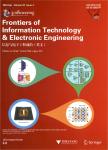Paper evolution graph: multi-view structural retrieval for academic literature
Paper evolution graph: multi-view structural retrieval for academic literature作者机构:College of Computer Science and Technology Zhejiang University
出 版 物:《Frontiers of Information Technology & Electronic Engineering》 (信息与电子工程前沿(英文版))
年 卷 期:2019年第20卷第2期
页 面:187-205页
核心收录:
学科分类:12[管理学] 1205[管理学-图书情报与档案管理] 0810[工学-信息与通信工程] 0808[工学-电气工程] 0809[工学-电子科学与技术(可授工学、理学学位)] 08[工学] 081203[工学-计算机应用技术] 0839[工学-网络空间安全] 0835[工学-软件工程] 0812[工学-计算机科学与技术(可授工学、理学学位)]
基 金:Project supported by the National Key R&D Program of China(No.2018YFB0505000) the National Natural Science Foundation of China(No.61571393)
主 题:Paper evolution graph Academic literature retrieval Metagraph factorization Topic coherence
摘 要:Academic literature retrieval concerns about the selection of papers that are most likely to match a user s information needs. Most of the retrieval systems are limited to list-output models, in which the retrieval results are isolated from each other. In this paper, we aim to uncover the relationships between the retrieval results and propose a method to build structural retrieval results for academic literature, which we call a paper evolution graph(PEG).The PEG describes the evolution of diverse aspects of input queries through several evolution chains of papers. By using the author, citation, and content information, PEGs can uncover various underlying relationships among the papers and present the evolution of articles from multiple viewpoints. Our system supports three types of input queries: keyword query, single-paper query, and two-paper query. The construction of a PEG consists mainly of three steps. First, the papers are soft-clustered into communities via metagraph factorization, during which the topic distribution of each paper is obtained. Second, topically cohesive evolution chains are extracted from the communities that are relevant to the query. Each chain focuses on one aspect of the query. Finally, the extracted chains are combined to generate a PEG, which fully covers all the topics of the query. Experimental results on a real-world dataset demonstrate that the proposed method can construct meaningful PEGs.



